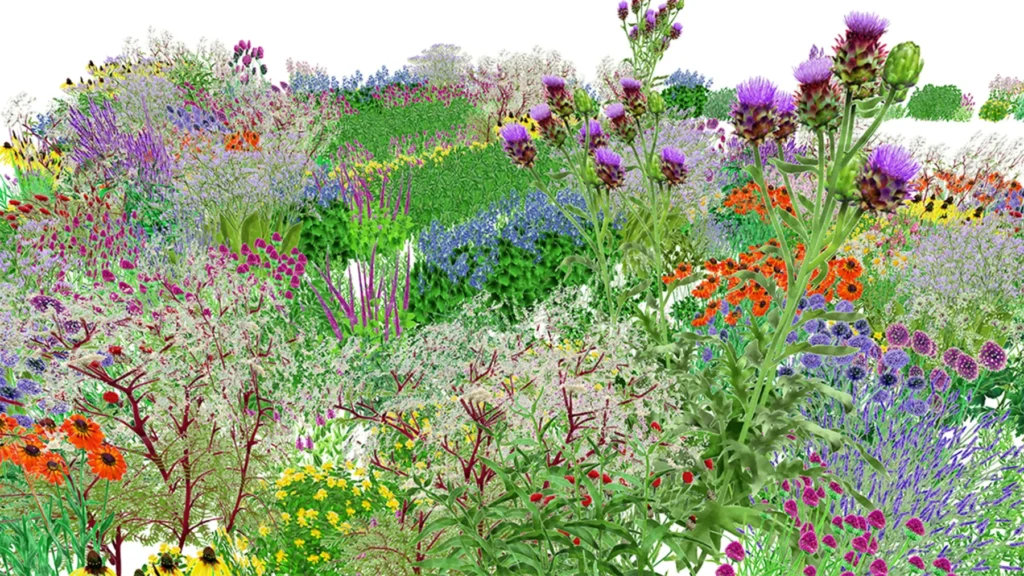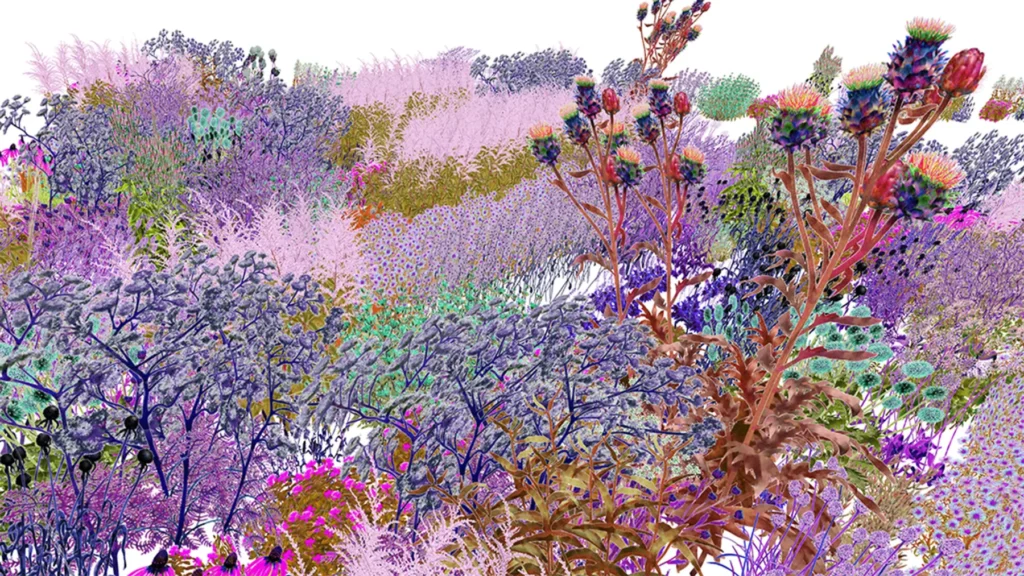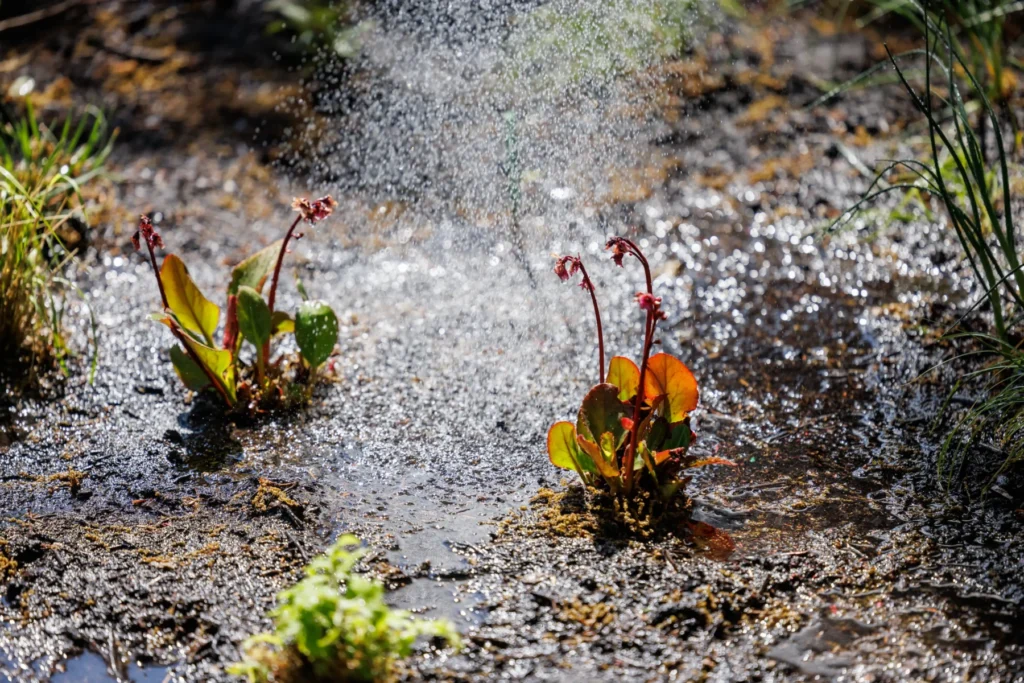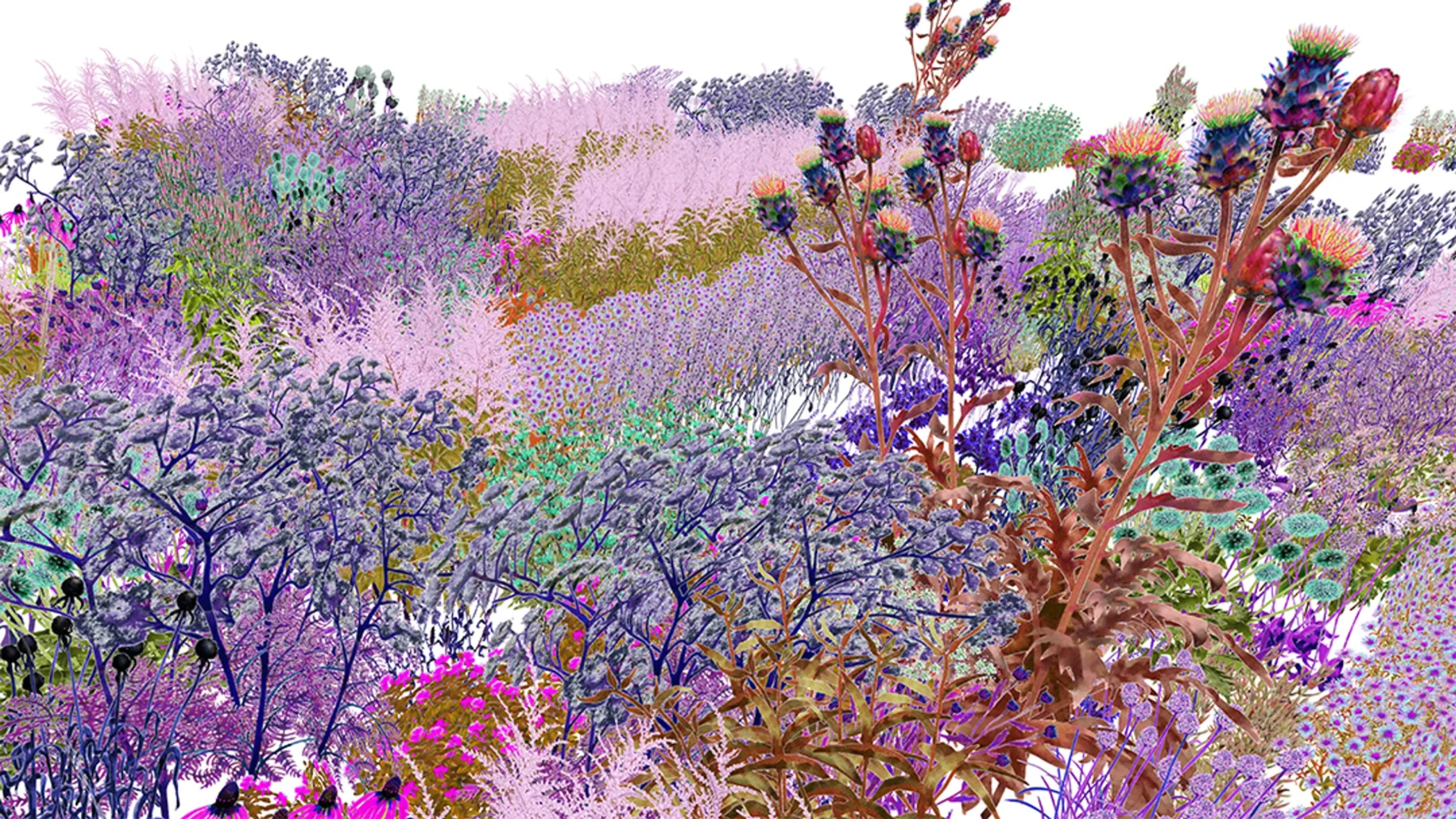Text by Juliette Wallace

What if art were made for all species? What would happen if the concept of an object’s value were spun on its head? How would it look if beauty were determined by something other than human preference? These are questions for the future; questions that some of us are asking now…
“Future Thinking Though Art” is the motto of Berlin-based arts organisation LAS Art Foundation, an innovative foundation that works with institutions and artists across the globe to ask questions of and find solutions for our future. The prospect of the coming decades may appear scary, making their impending approach a vital point of discussion.
Our current sociological, economical, political and environmental situation has left us teetering on the edge of drastic shifts, some of which are unsettling. News stations, social-media feeds, political houses and international organisations such as the WHO (World Health Organisation) are all engaged in animated, often contradictory, discussions about our current status and what that means for the future, regularly sending us – the general public – into frenzied states of agitation and confusion.
There is a desperate need for an alternative to these dominant sources of information – one that displays a different viewpoint and innovative solutions to a time-sensitive issue that affects us all. In a unique moment, the arts are in a position to take on this mission to make a real change to our future, and organisations such as LAS Art Foundation are a fundamental part of this.
Development is key to what LAS do. Theirs is not a mission of continuation but a crusade into the unknown …explor[ing] the possibilities of tomorrow by working with visionary artists, thinkers and institutions to develop ground-breaking projects and experiences. Ranging from subjects such as technology and its impact on desire and free will (presented through a digital mini-series) to a robotic performance engaging with the issue of an increase in the wild boar population in Berlin to their current piece, Dr Alexandra Daisy Ginsberg’s Pollinator Pathmaker, LAS feed their curiosity with a wide range of socially engaged projects from across the globe.
The aim is to not only bring people together in the name of art, beauty, contemplation and wonder but also to stimulate widespread change and understanding in a lasting and significant way. Curiosity drives us to continually reimagine the role of an arts organisation as one that shapes and evolves with our collective futures. LAS’ in-house team of 18, along with the organisation’s many international ambassadors and collaborators, access the worlds of the fascinating and the fascinated in order to achieve this goal.

LAS couldn’t have found a better person to help them propel their mission forwards than artist Alexandra Daisy Ginsberg, and it’s clear that the feeling is mutual: I am so grateful for LAS’ enthusiasm to invest in this campaign and to see the vision for Pollinator Pathmaker manifesting…I hope this can provide inspiration and a model for the next commissioners…, proclaimed Ginsberg in an interview with CLOT.
In an art climate where the subject of our planet’s future, the importance of interspecies communication and multi-disciplinary action is popular (practically to the point of becoming the norm), Pollinator Pathmakers presents something new. In its nature as expansive and explorative, the work’s premise is multi-fold.
Stretching beyond the immediate message, Ginsberg breaks the fifth wall through reflecting not only on the future of our planet but on the state of today’s art world and the challenges that it poses. In the artist’s own words, Pollinator Pathmaker explores questions driving my practice today: Can art be enjoyed by the more-than-human? What is the role of art in the ecological crisis? What is “value” in art? Is it possible to make truly altruistic technologies, or is everything that humans create ultimately for our own benefit?.
Ginsberg – artist, researcher and feeder of curiosities – has looked at the world around her in order to inform her own practice, creating something that lives and grows and LAS, in their vision of an interconnected world where questions are answered and then questioned again, has been her key partner-in-action.
Pollinator Pathmaker is a living artwork that takes the form of physical gardens created through digital, algorithmic tools. It is an example of how digital art [can] be presented […] sustainably, without screens. The piece is designed to optimise the pollination process of key creatures that enable plants to spread and reproduce, including bees, wasps, moths, butterflies and beetles. It began as a 2020 commission by the Eden Project (in Cornwall, England) for a sculpture that highlights the threat to these pollinating creatures.
Through Ginsberg’s research and commitment to the cause, the work grew from there into what it is today. She was interested not only in representing the above-mentioned issues for her fellow man but, rather, in making a work that would actually contribute to tackling the situation and act as an aid to non-human species. In talking of the insects she was commissioned to comment on Ginsberg told CLOT: instead of making something about them, I wanted to make an artwork for pollinators. Why use precious resources to make an object, when the outdoor space could actively provide forage? Rather than destroy by creating, I wanted to make something climate positive.


Housed at Berlin’s 19th-century institution of curiosity, the Museum für Naturkunde (Museum of Natural History), Pollinator Pathmaker has found a fitting site but the work is not limited to this one place. Ginsberg and LAS have made it their mission to spread the seeds of Pollinator Pathway, literally and metaphorically, as far as possible through satellite contributions made by the general public.
This act both helps the cause of the work – increasing sites for pollination – as well as questions the concept of value as determined by the art market. Pollinator Pathmaker challenges us with an alternative way of thinking about an artwork: here, the value is in abundance, not scarcity. The more editions planted – big and small and close to each other – the greater the success of each.
This counters the norms in art, where the smaller the edition, the greater the value. Here each edition is part of a network across a landscape as pollinators travel between them, taking pieces of the artwork and depositing them elsewhere. Pollinator Pathmaker must be an unlimited edition, but the more editions created the more it becomes one single interconnected artwork. This is my aim: to make the world’s largest climate-positive artwork.”
In an act of defiance to many of her colleagues, Ginsberg has democratised the realm of high art, making the recreation of her piece free and accessible. Each large commissioned Edition – like the one with LAS Art Foundation – acts as a catalyst. Visitors learn about the artwork and are invited to make their own DIY Edition using my algorithmic tool at pollinator.art. Users don’t have to buy their personal edition; the instructions to fabricate it are free. Planting is straightforward even for the beginner gardener as you get a planting-by-numbers plan that uses a pixel grid. Each pixel contains one to three species. Alexandra Daisy Ginsberg’s action marks her desire to work towards the greater good rather than a superficial need to be ‘en trend’ and profit from the current zeitgeist.
The reader may be wondering if all of this ultraism has an adverse affect on the actual aesthetics of the work, this is art after all! The answer is yes, to an extent…but that’s also a subject that Ginsberg has managed to flip on its head. Through shifting the focus away from what humans find beautiful, Ginsberg has allowed for and explained the “mad” look of her piece.
It’s not meant to suit our aesthetic tastes. Ideally, the artworks are weird-looking compared to human-designed gardens. Here we have odd juxtapositions and visual design logic. Pixels containing individual species are dotted amidst larger drifts. All colours and heights are mixed together. The lover of beauty should not fear, however! At the end of the day, Ginsberg assures us that we will still find the work appealing: […] ultimately, for some evolutionary reason, we find flowers attractive. A carpet of flowers is aesthetically appealing, even if the patterning is a bit mad.
What Ginsberg and LAS have created marks an important action towards the reconsidering of our norms and the possibility for art to be democratised and useful. Rather than join the trend through contributing run-of-the-mill works that fit into an existing mould, Ginsberg uses her art to build new worlds and question everything about the ones in place. This author hopes to see more of this…






